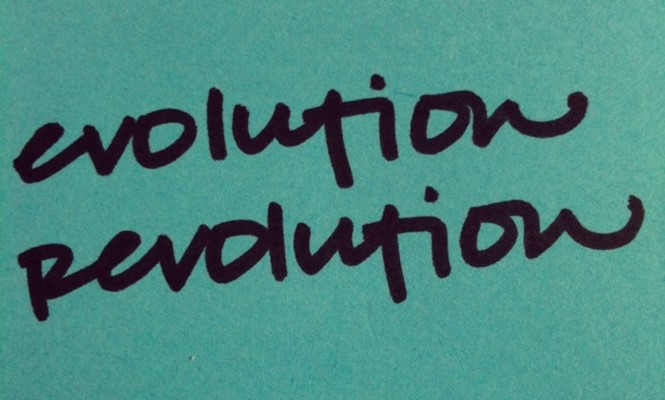A brand is forever, not just for Christmas

At a breakfast last month, co-hosted with independent creative engagement agency Rufus Leonard, discussing the development of the corporate brand, brand managers shared their thoughts about the modern comms landscape and the challenges that they face day in and day out.
“I mean it’s pretty exciting launching a brand but, okay now you’ve launched it, now you have to maintain it. ‘Really?’ ‘Yes, yes you do.’ A brand is for life, not just for Christmas.”
There is the temptation, for some, to over-brand. That is, to take a product or an idea and turn it into a brand in its own right. Within the larger ecosystem of a company’s brand architecture, that temptation oft turns poisonous.
Where sub-brands are introduced and maintained in a healthy manner, one attendee at last month’s Brand Development Breakfast said, “You definitely know there’s a reason to have different brands, because obviously it’s expensive to maintain and grow and evolve brands.” A sub-brand should not be created lightly. Another speaker agreed, “I can’t understand just why these organisations can afford to fragment themselves, they’ve almost got to bulk up and become more visible and stronger and more distinctive and more singular. I’m always trying to persuade them to avoid the sub-brand.”
It’s not that there is no place for sub-brands, but often, as one speaker points out, they get proposed as a means to be creative with a product launch and introduce a captivating design. Brand, however, goes beyond design. Sub-brands should have their place within the corporate brand and they should have the clear identities and attributes that comprise any corporate brand. One attendee says to look at vision and values, not visual identity.
That debate was one of the many discussed at the breakfast in London last month. Attended by brand managers from well-known domestic and international companies as well as brand strategists Rufus Leonard, the discussion got at some of the challenges brand professionals face today.
The most provocative question asked was about brand development: Is it an evolution or a revolution? The answer, predictably, was mixed. To a large extent, what defines rebrands and brand development processes is an evolution. That helps brands avoid what one attendee said was a challenge, “You know, after having been through a quite radical, I suppose, revolution if you like, or rebrand, the danger for us is we kind of go ‘phew.’ Five years later, we’ve got you again, mate.” Revolution can be exciting, but if it doesn’t have the potential to induce brand evolution in the future, it is but a short-lived revolution.
Evolution can be motivated by a variety of factors, one speaker points to a new CEO with communications experience impelling the brand to change, another describes the stable of brands and products that need constant upkeep, a third examines the changing tides in his company’s sector as a catalyst to rebrand. Brand evolution is, at its core, trying not to reinvent the wheel but to maintain strong relationships between the company and its audiences.
While brand development does not follow any set scripture or format, there are certain challenges many brand managers face. One of which is getting leadership buy-in, usually an acquiescence that requires a clear return on investment and that’s where big data comes in.
One speaker said, “It’s about this financial stream that you have to justify for return on investment on an idea that has never been proved. So, you’ve got to be extremely brave or do it by yourself. And in the corporate world, you are struggling, always struggling, to make sense of an idea and how you justify it against return of investment where it’s never been done before.”
He adds, “We spent £2.5m just building a platform, just to have a ticket to the game because if you haven’t got a platform, or you’re not prepared to extract the relevant data of a member and allow the member to see that within the health kit of Google or Apple in the future, then you’re not in the game. And if you’ve not even got a ticket for the game, you’re going to struggle to catch up. It’s going to move so quickly.”
Data is important, all seem to agree, not only to keep up with consumer desires for personalisation and enhanced service, but to prove to corporate leaders that a brand is achieving an impact on the bottom line.
On the other side of the corporate audience coin, consumers have more demands on a brand vying for their time. It’s as if brands must also fight for a return on attention. One speaker says, “That’s the thing, maybe someone’s going to give my brand one minute of their attention. What can they get within that minute that will give them what they want and hopefully also work for our business?”
Another points out that segmentation within customer research should change to reflect this. “What you know about people is in how they use your business, not how they live their lives,” she says.
That’s true for the internal audience as well. Brand values should not, attendees say, be printed out and posted on the wall. They should number no more than three or four and describe not intangible, lofty words like ‘honesty,’ but behaviours that employees can aspire to espouse. “I also think values don’t work because what is a value? It’s a very intangible concept. But a behaviour is something I can model and do and can be measured against. I strongly believe that yes, behaviours should be linked to the brand,” says one attendee.
In the end, it came down to the evolution/revolution debate once again. Should a brand lead a revolution or should it allow the business to evolve to meet new circumstances? Speakers agreed that a master brand should undergo consistent evolution and that sub-brands are not to be used as a revolutionary tactic. Both have a clear purpose and if that purpose is both recognised and allowed to develop, the brand will thrive.
As one person summarised, “I mean it’s pretty exciting launching a brand but, okay now you’ve launched it, now you have to maintain it. ‘Really?’ ‘Yes, yes you do.’ A brand is for life, not just for Christmas.”
Attendees

Alex Lane, head of brand identity, Lloyds Banking Group

Amanda Clay, head of brand, Telefonica Europe

Andrew Geldard, head of communications & brand, Wilmott Dixon

Andrew Marcus, deputy head of communications, Museum of London

Beatrice Vears, head of brand marketing, Premier Inn

David Langridge, marketing director, Fitness First
The brand breakfast was held under Chatham House rules. Above were those present, but none of their quotes are attributed.












